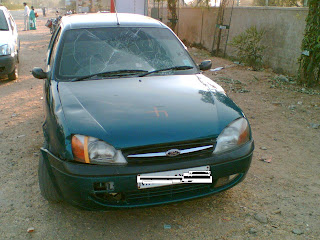I read few days ago in times of India that most mumbaikar feel proud about leaving past tragedies such as bomb blast and two floods in two years. They cherish their so called resiliency. I question it.
My colleague, Col Ajay Sharma shared an article (attached) and the though got triggered again, are we resiiant or ignorant about pain of family of people who died in bomb blast, of families who lost lives and everything in floods.
Is it not an irony? Our country celebrates forgetting all that happened in floods and the bomb blast and cherishes the feeling of forgetting. We pride on moving on. But by not remembering such things and learning lessons, not honoring heros are we becoming ignorant individualistic community.
We all like to talk about Katrina and compare that to Mumbai floods. But in USA some one is still working on finding why it happened. Another Katrina has not happened since than in US, partly cause of mother nature blessings and partly because of their preparedness. But in Mumbai the story was different we had it once again this yeat. And if we just stay ignorant it'll be one more and many more.
You decide, are we resilient in this aspect or are we not?
--- Col Ajay Sharma’s forward …
Star versus 'Star'
The body of Major Manish Pitambare, who was shot dead at Anantnag , was cremated with full military honours at Thane on Wednesday
On Tuesday a news swept across all the news channels 'Sanjay Datt relieved by the court'. 'Sirf Munna Not a bhai' '13 saal ka vanvaas khatam' 'alhough found guilty for possession of armory, Sanjay can breath sigh of relief as all the TADA charges against him are withdrawn'
And then many experts like Salman khan saying 'He is a good person. In other news, Parliament was mad at Indian team for performing bad; Greg chapel said something .....; Bomb scare in gorakhpoor express; and Shah Rukh Khan replaces Big B in KBC and Sonia asked PM to consider reducing petroleum prices. But most of the emphasis was given on Sanjay Datt's "phoenix like" comeback from the ashes of terrorist charges.
Surfing through the channels, one news on BBC startled me, it read, Hisbul Mujahidin's Most wanted terrorist 'Sohel Faisal' killed in anantnag, India. Indian Major leading the operation lost his life in the process. Four others are injured.
It was past midnight, I started visiting the Indian channels, the ones who are 'Sabse TEZ', but Sanjubaba was still ruling. They were telling How Sanjubaba pleaded to the court saying 'I am the sole bread earner for my family' 'I have a daughter who is studying in US who will look after her'. And then they showed how sanjubaba was not wearing his lucky blue shirt while he was hearing the verdict. Also how he went to every temple and prayed for last some months. A suspect in Mumbai bomb blasts, convicted under armory act.....was being made into a hero.
Major Manish H Pitambare got the information from his sources about the terrorists' whereabouts. Wasting no time he attacked the camp killed the Hisbul mujahidin's suprimo and in the process lost his life..... To the bullets fired from an AK47......
He has a wife and a daughter (just like sanjubaba), age .....18 months.
Major Manish never said 'I have a daughter' ...before he took the decision to attack the terrorist hide out in the darkest of nights?
He never thought about having a family and he being the bread earner
No news channel covered this since they were too busy hyping a former drug addict, an actor in real and reel life, a suspect who's linked to bomb blasts which killed hundreds. Their aim was to show how he defied the TADA charges and they were so successful that his conviction in possession of armory had no meaning. They also concluded that his parents in heaven must be happy and proud of him......
Parents of Major Pitambare are still on this earth and they have to live rest of their lives without their beloved son. His daughter won't ever see her papa again.
Definition of a Star has changed Major... it really has. So sanjubaba always has a gun in every one of his movies then in real life if he has an AK47 then what's the big deal we are used to see him with some ammunition without it he's just a 49yr old hero so he did it for us.....so that we feel normal;
Even if one of the bullets from one of such AK47's took a Real Star's life ........
but sir bole toh ..... tension nahi leneka. Aapun ko thoda bura laga. Apun pure din aapke baarein mein socha. Sach bataun kya aapun dukhi matlab ki senty ho gaya isliye ye likha.
Abhi aaj paper mein aaya ki woh parliament mein 'lagey raho munnabhai' dikhane wale ....us din dekhna bhai...... pure parliament mein sab saarein sansad honge. koi walk out nahi karega par bhai uska koi gurantee nahi hai kya pata .....agar hamare sansad indian cricket team ke selection pe lad padein?..... . Kya bhaai point hain naa ? AAre haan apun ko yaad aaya ....woh sansad pe hamla karnewala koi afzal tha ....use abhi fasi hui ...ya nahi hui .....jaane do apun ko kya...... kuch log marein ..... sansad ko bachatein hue ...but bhai unki daughters toh india mein hich sikhti hain naa aapke jaise amerika mein nahi toh tension nahi leneka.........
--- end of forward…


